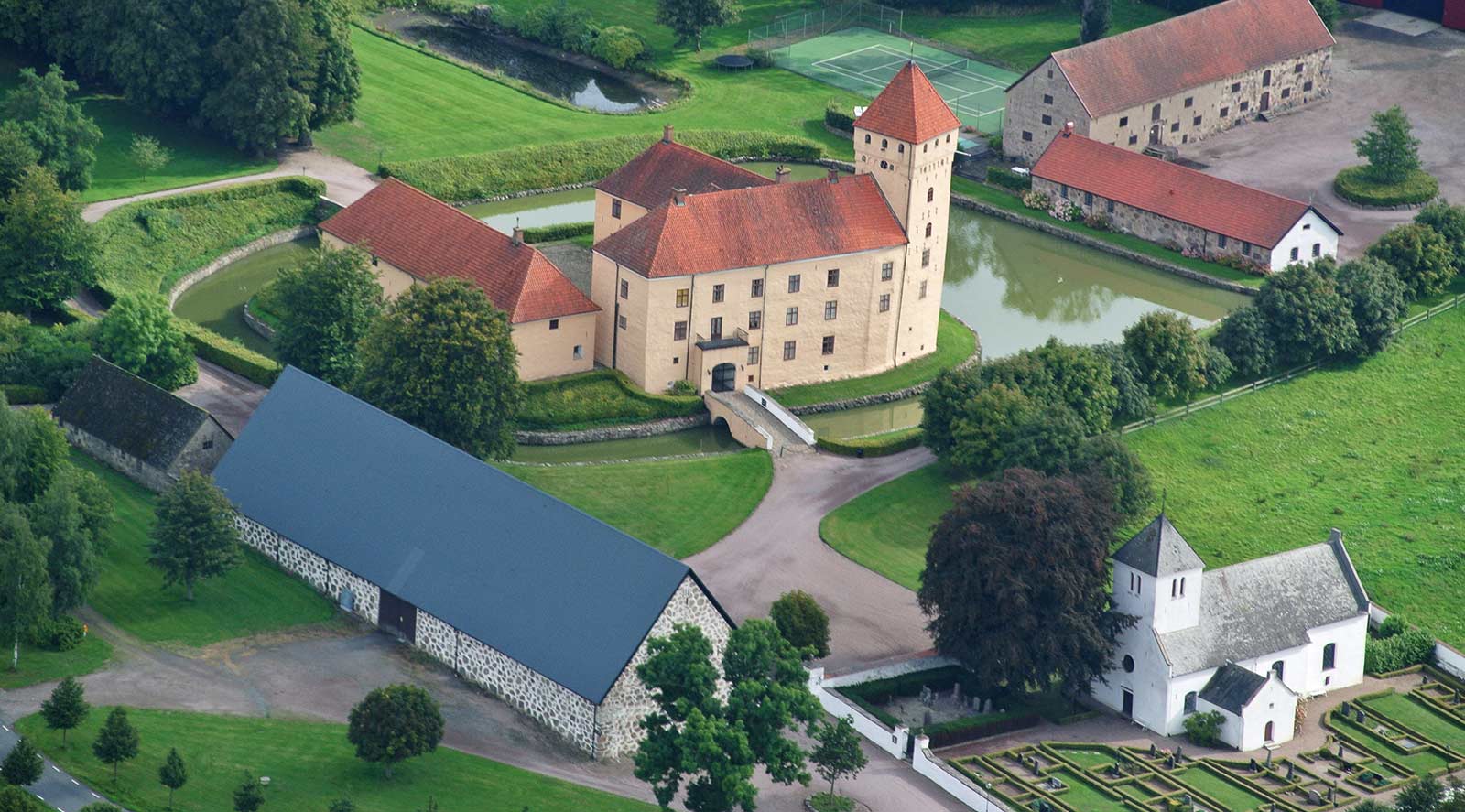
An enthralling story from the 1300´s
Tosterup is located approximately 12km north east of the town of Ystad and is one of the most interesting castles around Österlen, Sweden. Located amidst surging and rolling landscapes of open fields it has a magnificent outlook all the way down to the sea. There is documentation from as early as the 1300´s and an array of fascinating people has owned or been associated with Tosterup during its 700 years. The original castle was probably built a couple of kilometers further north east. The main building of Tosterup was finalized around the 1500´s, with three stories. The constructor was the renowned Tage Axelsson Brahe.
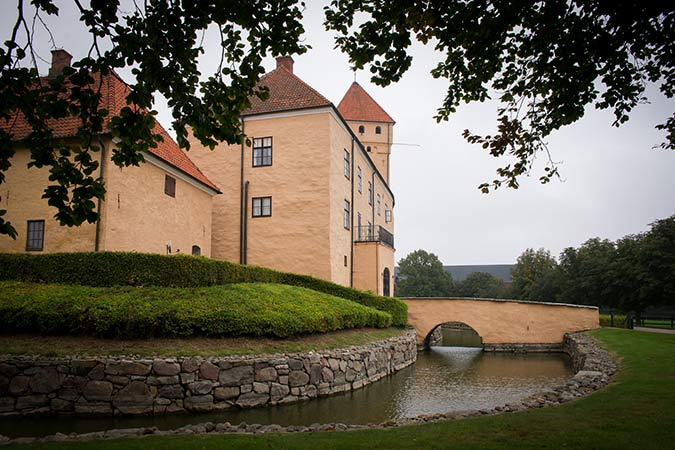
During the centuries, many interesting people have lived here at Tosterup. Jörgen Krabbe, Tycho Brahe and Carl August Ehrensvärd are some among these. Since the early 1800´s Tosterup has been owned by the Ehrensvard family.
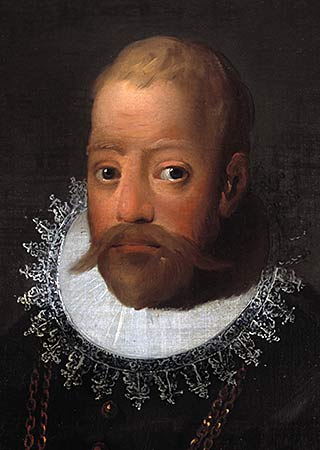
Tycho Brahe
The castle and houses
As previously mentioned, the main parts of the castle were finalized around the 1500´s by Tage Axelsson Brahe. During this time an entrance vault was added and built on the south side through the main building, making a tunnel into the courtyard. The arch was finalized with a tower, which the lower part of is still in its original state. A drawbridge was built over the moat and was there until the 1800´s when it was replaced by a permanent one, which is still being used today.
The tower and the oldest parts of the building are most likely built sometime after 1483, as it was at this time King Hans revoked the prohibition on nobility being allowed to build fortified houses. Over the centuries varying renovations has taken place, but the castle has preserved its classical appearance. Today, the castle consists of three parts including a five stories high, square shaped defense tower in the south eastern corner. The complete building is surrounded by a moat with a connecting stone bridge. In the beginning, the tower itself was detached from the rest of the buildings, but in the mid 1500´s it was joint. The castle was used as a navigation mark and a lantern inside the tower warned seafarers for dangers near the southern coastline. Sandhammaren lighthouse was built later on to replace the role Tosterup previously had responsibility for.
Rutger Barnekow was an industrious constructor and his works can still be seen around Tosterup today. Two wings were completed as additions to the main building and on the northern side the main building itself had a tower with stairs added to it. The draw bridge was replaced by a set stone bridge. ”Barnekowska logen”, is one of the few farm buildings built by him that is still intact. It is the first building on the left when you enter the property through the castle gates.
Ownership families
The first known owner of Tosterup is Axel Eskildsen Mule dated to the beginning of the 12th century. The estate was later on owned by the Grim family and according to historic papers from 1374, Anders Jacobsen Grim names himself ”ridder til Tostorp”, meaning; ”knight to Tostorp” (ancient spelling of Tosterup). Around 1440, Axel Pedersen Brahe, the first in many Brahe owners to come, acquired the estate from Jens Andersen Grim who was not only the son of the previous owner but also in the close circle of Queen Margrethes selected few.
Axel Pedersen Brahe died in 1487 and the estate was let down to his son, the privy councilor Tyge Axelsen Brahe, who is known for a pompous wedding at the fort of Bollerup. Tyge Brahe died in the battle between King Christian II and the nobility in the year of 1523. The eldest son; Jörgen Tygesen Brahe of the couple Hans and Magdalene Krognos inherited Tosterup, which he managed for over 40 years. His brother; Otte Brahe managed the estate of Knutstorp. Otto Brahe got a son 1546, who came to be a famous astronomer; Tycho Brahe. Jörgen Tygesen Brahe, the owner of Tosterup at the time, never got any children so he decided to kidnap his young nephew. The uncle promised to make Tyco the sole beneficiary which steered clear from a disastrous dispute and the parents trusted him with the raising of their son.
Tycho Brahe, was due to this raised alone, separate from the rest of his family and siblings, together with his uncle and aunt. Because of their lack of experience in raising a child, Tycho did not have a lot rules to comply with. This came to be an intrinsic part of who he was as a person, as he continued to go his own way the rest of his life. His uncle realized early on that the boy had unique academic capacity, this led on to him starting his university studies only at 13 years of age. However, his fathers wish was that he would undertake a career within the military, this was not included in Tycho´s visions for the future. After experiencing a solar eclipse year 1560, natural sciences became his true passion in life. Rumor has it that his first star sightings took place from the tower here at Tosterup.
Jörgen Brahe took part in the Nordic Seven Years´ War as a Danish national admiral and died in 1565 due to pneumonia. His death was viewed as honorary in many eyes, because of his bravery when jumping into the freezing cold water from the Amagerbridge in Copenhagen to rescue King Fredrik II who had fallen of his horse. The lands of Scania was ravaged during the time of war. Tosterup got by without much damage, however, the church from the 1100´s and estate belonging to the farm was burnt down. At the end of the war, in 1570, a shift of ownership took place. Jörgen Ottesen Brahe, brother to the famous astronomer Tycho Brahe took over the estate. He had the church renovated and successfully built a port through the old main building. The last owner in the Brahe family, Tyge Axelsen Brahe, died in 1640.
The property was then sold to the so called ”King of Scania”, Tage Ottesen Thott, who was one of his times prominent men and the richest man in Scania. His son, Otte Thott, was the next owner in line. Otte´s sons were forced to flee to Denmark after the gory battles in Sånska kriget (The war of Scania) in 1677. This due to accusations of conspiracy towards the Swedish government. Tosterup was then taken over by one of Otte Thotts´ daughters, Jytte, who was the first woman to own the estate.
She married one of the the front representatives of the Swedish nobility; Jörgen Iversen Krabbe who was the owner of the large estate of Krageholm. Krabbe was imprisoned by Swedish authority as he was alleged to have committed dire treason. He was decapitated on Stortorget in Malmö a day in January in 1678. It was without doubt a question of a judicial murder that took place. The Swedes were on a quest after Krabbes´ estate but he refused to sell. His young widow devoted the rest of her life to exculpate his name. The remains of Krabbe are still preserved in a beautifully made coffin in the church of Tosterup.
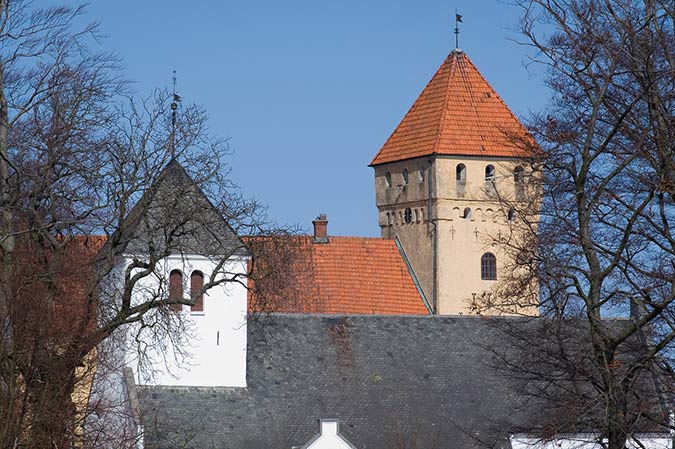
All her efforts eventually drained her fortune and the field marshal Rutger von Aschenberg became the new owner of Tosterup in 1688 as he took over the debts. Ascheberg, who originated from a noble german-baltic family, had already participated in the 30 Years´ War with the Swedes when he was 19 years old. He later on took part in the Polish and Danish incursions under the rule of Karl X Gustav. Aschenberg also led troops in Scania as supreme commander under Karl XI and his wars in Scania. His military achievements truly impressed the normally frugal King which led him to completely heap praise upon him with both honors and extravagant gifts. He first received the title baron, then general in 1674, field marshal in 1678, governor over Gothenburg, Bohuslän and Dal, general governor of Scania, Halland and Blekinge in 1680, part of the royal council in 1681 and at last, earl in 1687.
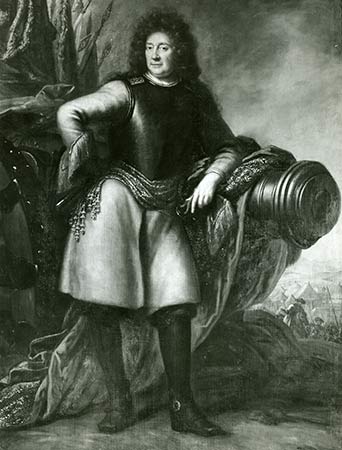
Rutger von Ascheberg
He had already become one of the most influential county squires in Bohuslän during the mid 1600´s. As a general governor along with many other power positions in society he used his status to acquire countless Swedish-Danish estates. One of the the most important sources of income for the nobility in Scania was the trade of oxen and during the end of the 1600´s 45% of the total export from the harbors in Scania was oxen. Ascheberg took advantage of his favorable social rank and made sure his cattle were the first ones to board the ships from Ystad to the northern German marketplaces in order to ensure the best prices.
The many years of war had resulted in hardship for the county of Scania and parts of the towns were both depredated and sabotaged. Ascheberg wanted to rebuild the province through assimilating the Scanians´ with the Swedes. Despite persistent opposition from the King and a large Swedish faction, who implied that the Scanians´ did not belong to Sweden. At the end of his lifetime he had become father to non less than 25 children, of which only one son and four daughters outlived him.
His daughter Margareta who lived at Vittskövle, married to Kjell Christoffer Barnekow became a widow before her 30´s. Out of Aschebergs´ 25 children, she inherited Tosterup. Her son, Rutger Barnekow took over Tosterup 1753 after managing the estate of Örtofta along with his brother the years after their father had past. He chose to pursue the military career as his father had done, and excelled to become colonel for the Northern Scania cavalry regiment. He led his regiment with success during the Pomeranian War 1757-62. He made significant contributions to Tosterup in order to advance the farming. Apart from a few stables and other facilities, he made the beautifully constructed forged entry gate. He also renovated the interior of the church. He married Mariana Lovisa Maclean who he got plenty of children with, and out of these children only three survived their father. When colonel Barnekow died in 1772, his two daughters inherited the estate, and in 1782 it was sold to Erik Ruuth.
In 1783 Tosterup was once again sold, this time to Lieutenant General Count Johan Sparre, ex- Commander at Sveaborg. He and his dutch wife, Alexandrine De Cheuses, were the ones who planted the long tree avenues that can be seen around Tosterup. Alexandrine lived as a widow at Tosterup for over 20 years after her husband had passed. Accompanying her were for the most part her daughter Sophie and her well-known husband, the author and drawer, general admiral Carl August Ehrensvärd. Through his name and artistry he made the castle and the area quite recognized.
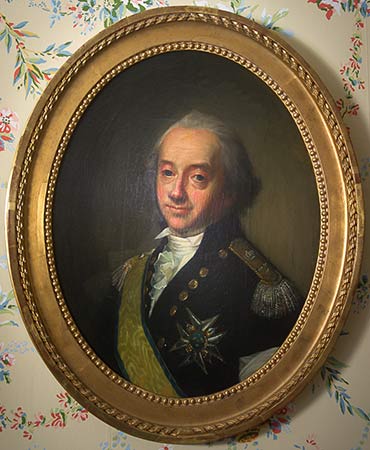
Carl August Ehrensvärd
In 1795 he wrote a book about traveling in Scania. The book includes exceptional depictions of the landscape of Scania. The book is illustrated by his own drawings and watercolor paintings. He had close contact with the owner of Svaneholm, Rutger Maclean, and especially expressed his admiration towards the work he had done with modernizing and making farming more efficient.
In 1832 the Ehrensvard family took over Tosterup, and it has been the family ever since. At the time Tosterup had over 3500 hectare but after the first change-of-generation, parts of the estate were split up. Among these were Henriksfält, Hedvigsdahl and Munka Tågarp. The farm was leased out during great parts of the 1900´s, but in 1962 Jörgen Ehrensvärd fell heir and took over. The farming was modernized and the estate in general was substantially renovated during this time.
Since 2009 Tosterup belongs to Jörgens´ son, Jan Ehrensvärd.
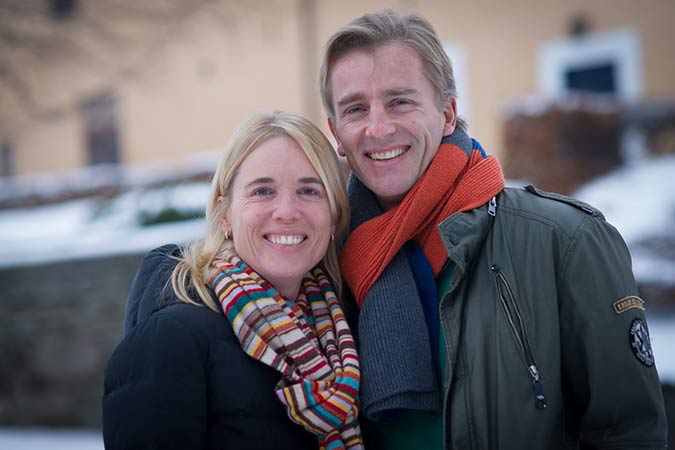
Catherine och Jan Ehrensvärd.
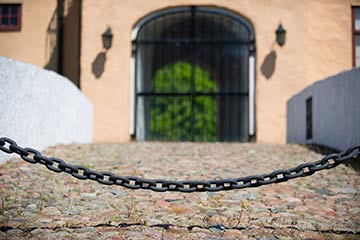
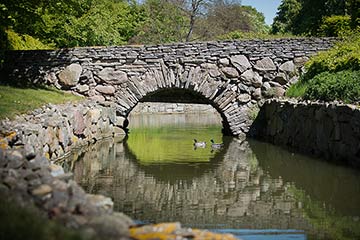
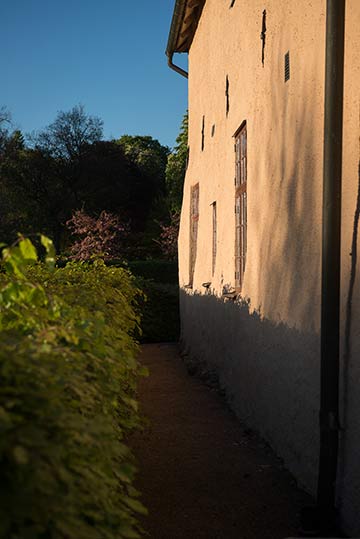
An enthralling story from the 1300´s
Tosterup is located approximately 12km north east of the town of Ystad and is one of the most interesting castles around Österlen, Sweden. Located amidst surging and rolling landscapes of open fields it has a magnificent outlook all the way down to the sea. There is documentation from as early as the 1300´s and an array of fascinating people has owned or been associated with Tosterup during its 700 years. The original castle was probably built a couple of kilometers further north east. The main building of Tosterup was finalized around the 1500´s, with three stories. The constructor was the renowned Tage Axelsson Brahe.

During the centuries, many interesting people have lived here at Tosterup. Jörgen Krabbe, Tycho Brahe and Carl August Ehrensvärd are some among these. Since the early 1800´s Tosterup has been owned by the Ehrensvard family.

Tycho Brahe
The castle and houses
As previously mentioned, the main parts of the castle were finalized around the 1500´s by Tage Axelsson Brahe. During this time an entrance vault was added and built on the south side through the main building, making a tunnel into the courtyard. The arch was finalized with a tower, which the lower part of is still in its original state. A drawbridge was built over the moat and was there until the 1800´s when it was replaced by a permanent one, which is still being used today.
The tower and the oldest parts of the building are most likely built sometime after 1483, as it was at this time King Hans revoked the prohibition on nobility being allowed to build fortified houses. Over the centuries varying renovations has taken place, but the castle has preserved its classical appearance. Today, the castle consists of three parts including a five stories high, square shaped defense tower in the south eastern corner. The complete building is surrounded by a moat with a connecting stone bridge. In the beginning, the tower itself was detached from the rest of the buildings, but in the mid 1500´s it was joint. The castle was used as a navigation mark and a lantern inside the tower warned seafarers for dangers near the southern coastline. Sandhammaren lighthouse was built later on to replace the role Tosterup previously had responsibility for.
Rutger Barnekow was an industrious constructor and his works can still be seen around Tosterup today. Two wings were completed as additions to the main building and on the northern side the main building itself had a tower with stairs added to it. The draw bridge was replaced by a set stone bridge. ”Barnekowska logen”, is one of the few farm buildings built by him that is still intact. It is the first building on the left when you enter the property through the castle gates.
Ownership families
The first known owner of Tosterup is Axel Eskildsen Mule dated to the beginning of the 12th century. The estate was later on owned by the Grim family and according to historic papers from 1374, Anders Jacobsen Grim names himself ”ridder til Tostorp”, meaning; ”knight to Tostorp” (ancient spelling of Tosterup). Around 1440, Axel Pedersen Brahe, the first in many Brahe owners to come, acquired the estate from Jens Andersen Grim who was not only the son of the previous owner but also in the close circle of Queen Margrethes selected few.
Axel Pedersen Brahe died in 1487 and the estate was let down to his son, the privy councilor Tyge Axelsen Brahe, who is known for a pompous wedding at the fort of Bollerup. Tyge Brahe died in the battle between King Christian II and the nobility in the year of 1523. The eldest son; Jörgen Tygesen Brahe of the couple Hans and Magdalene Krognos inherited Tosterup, which he managed for over 40 years. His brother; Otte Brahe managed the estate of Knutstorp. Otto Brahe got a son 1546, who came to be a famous astronomer; Tycho Brahe. Jörgen Tygesen Brahe, the owner of Tosterup at the time, never got any children so he decided to kidnap his young nephew. The uncle promised to make Tyco the sole beneficiary which steered clear from a disastrous dispute and the parents trusted him with the raising of their son.
Tycho Brahe, was due to this raised alone, separate from the rest of his family and siblings, together with his uncle and aunt. Because of their lack of experience in raising a child, Tycho did not have a lot rules to comply with. This came to be an intrinsic part of who he was as a person, as he continued to go his own way the rest of his life. His uncle realized early on that the boy had unique academic capacity, this led on to him starting his university studies only at 13 years of age. However, his fathers wish was that he would undertake a career within the military, this was not included in Tycho´s visions for the future. After experiencing a solar eclipse year 1560, natural sciences became his true passion in life. Rumor has it that his first star sightings took place from the tower here at Tosterup.
Jörgen Brahe took part in the Nordic Seven Years´ War as a Danish national admiral and died in 1565 due to pneumonia. His death was viewed as honorary in many eyes, because of his bravery when jumping into the freezing cold water from the Amagerbridge in Copenhagen to rescue King Fredrik II who had fallen of his horse. The lands of Scania was ravaged during the time of war. Tosterup got by without much damage, however, the church from the 1100´s and estate belonging to the farm was burnt down. At the end of the war, in 1570, a shift of ownership took place. Jörgen Ottesen Brahe, brother to the famous astronomer Tycho Brahe took over the estate. He had the church renovated and successfully built a port through the old main building. The last owner in the Brahe family, Tyge Axelsen Brahe, died in 1640.
The property was then sold to the so called ”King of Scania”, Tage Ottesen Thott, who was one of his times prominent men and the richest man in Scania. His son, Otte Thott, was the next owner in line. Otte´s sons were forced to flee to Denmark after the gory battles in Sånska kriget (The war of Scania) in 1677. This due to accusations of conspiracy towards the Swedish government. Tosterup was then taken over by one of Otte Thotts´ daughters, Jytte, who was the first woman to own the estate.
She married one of the the front representatives of the Swedish nobility; Jörgen Iversen Krabbe who was the owner of the large estate of Krageholm. Krabbe was imprisoned by Swedish authority as he was alleged to have committed dire treason. He was decapitated on Stortorget in Malmö a day in January in 1678. It was without doubt a question of a judicial murder that took place. The Swedes were on a quest after Krabbes´ estate but he refused to sell. His young widow devoted the rest of her life to exculpate his name. The remains of Krabbe are still preserved in a beautifully made coffin in the church of Tosterup.

All her efforts eventually drained her fortune and the field marshal Rutger von Aschenberg became the new owner of Tosterup in 1688 as he took over the debts. Ascheberg, who originated from a noble german-baltic family, had already participated in the 30 Years´ War with the Swedes when he was 19 years old. He later on took part in the Polish and Danish incursions under the rule of Karl X Gustav. Aschenberg also led troops in Scania as supreme commander under Karl XI and his wars in Scania. His military achievements truly impressed the normally frugal King which led him to completely heap praise upon him with both honors and extravagant gifts. He first received the title baron, then general in 1674, field marshal in 1678, governor over Gothenburg, Bohuslän and Dal, general governor of Scania, Halland and Blekinge in 1680, part of the royal council in 1681 and at last, earl in 1687.
He had already become one of the most influential county squires in Bohuslän during the mid 1600´s. As a general governor along with many other power positions in society he used his status to acquire countless Swedish-Danish estates. One of the the most important sources of income for the nobility in Scania was the trade of oxen and during the end of the 1600´s 45% of the total export from the harbors in Scania was oxen. Ascheberg took advantage of his favorable social rank and made sure his cattle were the first ones to board the ships from Ystad to the northern German marketplaces in order to ensure the best prices.

Rutger von Ascheberg
The many years of war had resulted in hardship for the county of Scania and parts of the towns were both depredated and sabotaged. Ascheberg wanted to rebuild the province through assimilating the Scanians´ with the Swedes. Despite persistent opposition from the King and a large Swedish faction, who implied that the Scanians´ did not belong to Sweden. At the end of his lifetime he had become father to non less than 25 children, of which only one son and four daughters outlived him.
His daughter Margareta who lived at Vittskövle, married to Kjell Christoffer Barnekow became a widow before her 30´s. Out of Aschebergs´ 25 children, she inherited Tosterup. Her son, Rutger Barnekow took over Tosterup 1753 after managing the estate of Örtofta along with his brother the years after their father had past. He chose to pursue the military career as his father had done, and excelled to become colonel for the Northern Scania cavalry regiment. He led his regiment with success during the Pomeranian War 1757-62. He made significant contributions to Tosterup in order to advance the farming. Apart from a few stables and other facilities, he made the beautifully constructed forged entry gate. He also renovated the interior of the church. He married Mariana Lovisa Maclean who he got plenty of children with, and out of these children only three survived their father. When colonel Barnekow died in 1772, his two daughters inherited the estate, and in 1782 it was sold to Erik Ruuth.
In 1783 Tosterup was once again sold, this time to Lieutenant General Count Johan Sparre, ex- Commander at Sveaborg. He and his dutch wife, Alexandrine De Cheuses, were the ones who planted the long tree avenues that can be seen around Tosterup. Alexandrine lived as a widow at Tosterup for over 20 years after her husband had passed. Accompanying her were for the most part her daughter Sophie and her well-known husband, the author and drawer, general admiral Carl August Ehrensvärd. Through his name and artistry he made the castle and the area quite recognized.

Carl August Ehrensvärd
In 1795 he wrote a book about traveling in Scania. The book includes exceptional depictions of the landscape of Scania. The book is illustrated by his own drawings and watercolor paintings. He had close contact with the owner of Svaneholm, Rutger Maclean, and especially expressed his admiration towards the work he had done with modernizing and making farming more efficient.
In 1832 the Ehrensvard family took over Tosterup, and it has been the family ever since. At the time Tosterup had over 3500 hectare but after the first change-of-generation, parts of the estate were split up. Among these were Henriksfält, Hedvigsdahl and Munka Tågarp. The farm was leased out during great parts of the 1900´s, but in 1962 Jörgen Ehrensvärd fell heir and took over. The farming was modernized and the estate in general was substantially renovated during this time.
Since 2009 Tosterup belongs to Jörgens´ son, Jan Ehrensvärd.

Catherine och Jan Ehrensvärd.


